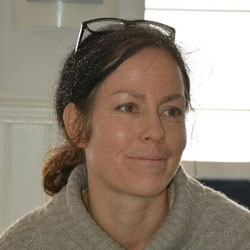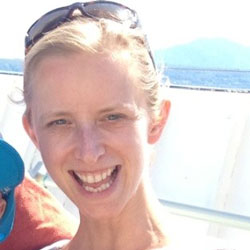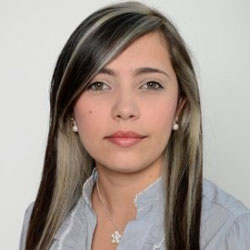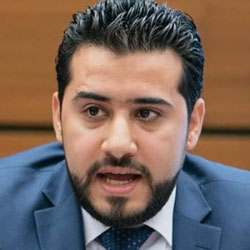The Child Protection Minimum Standards revision: Follow-up questions
On 19 June, PHAP organized an online session together with the Alliance for Child Protection in Humanitarian Action on the standards and how they are being used in practice. This was an opportunity to learn more about the standards and how practitioners are using them, what is changing in the revision, and what the next steps are for contributing to the consultations.
This event featured Minja Peuschel and Susan Wisniewski from CPMS Working Group as well as four practitioners who shared their experience of the CPMS and how they are engaging in the consultations: Riyad Alnajem from HURRAS in Syria, Patricia Landinez, from UNICEF, Mexico, Yesica Serrano, (CID), Colombia and Efe Listowell, from CHAD Intl., Nigeria. Christine Knudsen, Director of Sphere, also joined the event and provided some insights into how the CPMS relates to the Sphere standards and their current revision. While many of the questions from participants were answered during the event (which you can watch and listen to in the event page), there were more questions than there was time for, and the guest experts have answered follow-up questions in writing, which you can now read on this page.
“Will the CPMS also focus on institutions and home-like facilities?”
- HR Coordinator, Kenya

Minja Peuschel
While the CPMS is mainly focusing and promoting family-based care the standards can be used for protecting children anywhere. There are also paragraphs on e.g. transitional care settings.
“When are the revised CPMS targeted to be released?”
- Officer, Hong Kong

Minja Peuschel
We aim for a new edition to be launched sometime mid-2019.
“Why did you decide to bring in 'strengthening families' as a specific dimension in the revision?”
- Head of Project, Turkey

Minja Peuschel
There were two reasons: we did feel that the current strategy standards were a bit of mix of very different issues, and not coherent, so we wanted to find a form that more clearly showed strategies. But the socioecological model of a child is also a growing recognition, including that children's primarily protective environment lies within families or other close relations. Within that standards will be e.g. positive parenting and care.
“How will the CP minimum standards be integrated in other sectors like WASH, non-food items (NFI), shelter, food security and livelihoods (FSL), and nutrition?”
- Child Protection Officer, South Sudan

Susan Wisniewski
Standards 19-26 of the CPMS focus on integrated approaches and working across sectors. The standards look at how sectors can work together, including how child protection can be mainstreamed into other sectors, throughout all phases of programming. There are specific standards for child protection and the following sectors: economic recovery, education, health, nutrition, WASH, shelter, camp coordination and camp management and food security. We also have complementary resources such as a case studies and facilitation guide package to support discussion between sectors. In addition, we have been involved in the latest revision of the Sphere Handbook to ensure that key elements related to child protection in other sectors are included as relevant as well and are coherent with the CPMS.

Christine Knudsen
The Sphere Handbook has been revised over 2017-mid 2018 and we have had great inputs on child protection, as well as children’s issues into all of the chapter. This means that we have had guidance integrated into the chapters noted above on both addressing violations of children’s rights and preventing those violations, as well as supporting a healthy environment for children and making sure that services are accessible for them. In addition, we have a great (free!) app where the CPMS, Sphere, INEE, LEGS, MERS, and CaLP standards are available and cross-referenced. That means that you can search for information across any of these areas and find answers. The new edition of Sphere will be uploaded later this year, and the new CPMS will be uploaded when they are ready too.
“What would be the participation of children themselves in setting the standards?”
- Asst. Director, Nepal

Susan Wisniewski
Focus groups with children and adolescents are planned on the revised drafts in a few contexts, such as Nigeria, Armenia and for the Syrian response. Specific tools have been developed for these consultations to ensure they are adapted and relevant for children. The CPMS is also based on research and best practices that has been implemented with the participation of children. The standards are intended for humanitarian workers at all levels and we also have focal points reviewing the revised standards to ensure child participation is considered throughout. The focal points in this area are consulting with adolescents on the drafts to ensure their input is taken into account.

Yesica Serrano
Unfortunately given logistics, time and security reasons we won’t have participation of children per se. However, we will promote the participation of civil society actors that have experience giving assistance and developing actions directly with children. We understand it is not the same exercise as if we had the participation of children directly, but this is a way to promote -to certain level- the voice of children through those actors who are constantly with them. In addition, we hope to have the participation of community leaders who advocate for the rights and protection of children. In most of the contexts, these leaders are parents’ o care givers; this will also give us a broader perspective of children’s situation in the different contexts.
“Can you provide information about the CPMS training package?”
- JPO Child Protection, Switzerland

Susan Wisniewski
We have CPMS training package for Frontline Workers – both a version that can be used by manager’s with their child protection teams or a version to be used with interagency groups. They are available in English, French, Arabic and Spanish and can be requested at [email protected]. A CPMS video series is also available which includes videos that introduce how the CPMS can be used as well as videos on the specific standards. These can be found here. An CPMS e-learning course will be launched this September 2018. Please also see the Alliance for Child Protection in Humanitarian Action for the e-learning course and further training materials such as the mainstreaming case study package, the Child Protection in Emergencies Training and more at https://alliancecpha.org/.
“How is "protection mainstreaming" designed and implemented for child protection? How can it best be included in reporting?”
- Protection and Orphans Projects Manager, Palestine

Minja Peuschel
The mainstreaming standards (will in next edition be called 'standards to ensure an integrated approach') key actions are divided into key actions for CP workers and key actions for 'the other sector' workers. We were (and are now) working with representatives from other sectors in identifying key areas where sectors need to collaborate on to ensure protection of children. We see the absolute key aspect for this to happen is closer coordination, discussions and collaboration with other sectors. Preferably, in an integrated approach, sectors should to joint assessment, joint analyses, joint strategizing and joint evaluations.
“What are the links between child protection and women protection programmes on the ground (at the implementation level)?”
- Humanitarian Coordinator, Kenya

Minja Peuschel
Not sure if there are any official documents about women protection but there is much developed on Gender-based violence, which covers part of that. Just as with child protection, GBV is an Area of Responsibility within the Protection Cluster. In addition, the GBV sector is developing a GBV standard, which we are feeding in to - and they are feeding into and supporting our revision. So we are trying to ensure as great synergies as possible, while at the same time highlight our complementarities (as e.g. risks against children is not only based on gender).

Efe Listowell
A very interesting question. Without falling into the temptation of promoting negative gender norms that limits the scope of women participation, in certain contexts where women are primarily and predominately involved in child care, creating opportunities for these groups of women to build useful knowledge and skills (rudimentary and/or professional) in child protection certainly enhances their role within National child protection systems, amplifies their voices and increases their participation in a country's workforce. This is certainly the case in Nigeria where the Federal Ministry of Women Affairs and Social Development serve as the primary agency for child welfare in addition to other mandates.
“What are the connections between child protection and education in emergency?”
- Program Assistant, Jordan

Susan Wisniewski
There is a close link between the two sectors. Quality education contributes to the safety and wellbeing of children before, during, and after emergencies. Education can provide a safe and protective environment and supports children in re-joining their peer groups, improves their access to information and can provide hope for the future. Education also supports children’s resilience by nurturing their psychosocial and cognitive development, and, during times of crisis and emergency, it may help restore a sense of normalcy, dignity, and hope by offering the chance to participate in structured, age-appropriate activities in a safe, nurturing environment. Standard 20 of the CPMS is specifically on Child Protection and Education and provides key actions for workers from both sectors to move towards integrated programming. This standard is being revised jointly with education and child protection actors.
“How can we make CPMS donors requirement or enforce or link with other standards? Like MERS, LEGS...etc”
- Program Assistant, Jordan

Susan Wisniewski
Through the joint Humanitarian Standards Partnership (HSP), which includes the CPMS as well as the Sphere Standards, MERS, LEGS, INEE, and CaLP, advocacy is being done to ensure all sector standard work collaboratively. The HSP mobile app includes access to all the above standards and highlights the sections of each standard that overlap or link together. Joint case studies and training materials have been developed to support closer linkages. Greater advocacy is needed to make the CPMS a requirement by all donors and the Alliance for Child Protection in Humanitarian Action has developed guidance for donors on using the CPMS.

Christine Knudsen
I think that most donors require adherence to humanitarian standards generally, and should do so if they haven’t already included this in their application and reporting requirements! We take the position that these standards complement each other, as there are rarely any situations where only one standard can cover all of a community’s needs. That’s also why we set up the Humanitarian Standards Partnership (HSP) with these 6 sets of standards which are increasingly harmonized and aimed to make them usable by a broad audience of donors, practitioners, and communities themselves. Together in this Partnership we share the same foundation (the Humanitarian Charter, Protection Principles, and Core Humanitarian Standard) with an array of technical standards in WASH, Food Security and Nutrition, Health, Shelter and Settlement, Child Protection, Education, Livestock, Economic Recovery, Market Analysis and now also Older People and People with Disabilities. Standards have to link together to be effective for people we serve, and for any donor to be effective in the way they allocate resources.
“Riyad mentioned that this was a new area for practitioners in Syria. Were Syrians not aware of child protection or not aware of this as a humanitarian domain? In other words, is the sector building upon existing understanding and strategies?”
- Senior Lecturer, UK

Riyad Al Najem
Syria don’t not have an effective social affairs buddy -even before 2011- only a theatrical one, the way the government deals with the child protection made the violations normal and accepted and even part of the norms and traditions. It is common in the community that the child is considered an adult when s/he becomes 12/13 years old so they can drop out school, get a job, get married and in some cases, they get to go to the military service. Even early childhood, physical and emotional abuse is not criminalized by the law, so parents, teachers and other care givers usually hit children -most of the time extremely- as a discipline method. You can look up the concept of “Honor crimes” where fathers or brothers kill teenage girls for having relations with boys, this could give killer around 3 years jail time meanwhile 20 years for non-honor related crimes. The law addresses those issues to be prohibited, but the government does not monitor of follow up on protection concerns, this is why the community itself is not aware of the legal materials related to child violations.
This situation around dealing with child violations made it very hard to start something against norms and law, when we started with the child protection massages, it was very strange to parents and teachers to ask them not to hit children and the reaction usually was; “nonsense, we are disciplining them!” and when we don’t have a strong legal fundament regarding child protection in Syria, it was very hard for us to start operating.
“What are the main challenges to implement CPMS during emergency situation such as Syria?”
- Head of Mission – West Bank, Palestine

Riyad Al Najem
The main challenges in Syria were:
- New concept for the community.
- Lack of experienced workers.
- Lack of contextualized materials.
- The absence of legal practices related to child protection.
- The rapped change in the context.
“How we can consider the culture and traditions when implementing the CPMS, especially in Muslim countries?”
- Programme Coordinator, Mauritania

Minja Peuschel
We always recommend the CPMS to be contextualised in each setting. However, the CPMS has been widely used also in Muslim settings. In e.g. Sudan the gov’t are using them to develop their national Child Rights act.
“Practicing standards i.e. Sphere or CPMS is a key challenges in countries like Somalia. What should be the strategy for CPMS as the challenges on the ground are too much?”
- Emergency Programme Manager, Somalia

Susan Wisniewski
The CPMS are a global common agreement of what at minimum needs to be achieved in order for the protection of children to be of adequate quality. As you note, they are at the same time a practical and aspirational document. The limited resources and capacity of those working in child protection, combined with urgent and fast-changing child protection needs, are likely to necessitate prioritisation of some Standards above others, or a phased approach to achieving them. The Standards should be contextualised for the country or context. This involves having key stakeholders identify what are the priority Standards for the context and then reviewing those Standards to add details that will make them more relevant for the context. This can be a quick or extensive process depending on the needs and resources available. You can contact us at [email protected] for technical support and to receive resource guidance on how to contextualise the CPMS. The CPMS have been contextualised in 20 countries to date.
“How would you best advice to contextualize the CPMS in a setting like Somalia whereby every state essentially functions as its own country (each has their own president, parliament, laws, ministries etc.)?”
- Senior Policy, Advocacy and Campaigns Coordinator, Somalia

Susan Wisniewski
As above, guidance and support is available for contextualisation at [email protected]. It may be possible to look at areas within the standards where there are common issues and contextualise thought or standards can be contextualised at state level. There is no one way to contextualise and you can tailor the contextualisation process to your situation.
“Looking at different emergency contexts around the world, do you think standards of child protection should be the same in all countries and regardless of the circumstances and other factors?”
- Admin and Budget Support Officer, Jordan

Susan Wisniewski
The CPMS are a common agreement of what at minimum needs to be achieved in order for the protection of children to be of adequate quality in all contexts. As above, they are both a practical and aspirational document. Work in some contexts may exceed the standards while in other contexts, a phased approach may be needed to work towards achieving the standards given local resources, capacity and needs. Some Standards within the CPMS may have limited relevance in the local context as well. So while the global standards are applicable everywhere, contextualisation is a helpful process to translate the global standards into relevant and practical local standards. At the same, the minimum quality described within the Standards should never be lowered, even if it takes time to work towards achieving the minimum.

Yesica Serrano
I think the standards should not be the same for all countries and in some cases, as it is the context of Colombia, standards must not be the same for each region inside a country. I will try to explain my point through the next example:
Colombia is a country with a great variety of cultures and costumes. The geographical conditions, diversity of natural resources, infrastructure and other factors have caused that each region counts with specific characteristics. As a result, each of the 32 departments face completely different socio-economical and development situations. In addition to it, we have a great ethnic diversity including afro communities, indigenous communities, gypsies, among others. These communities are located in different regions of the country. While regions like Chocó have a great number of both Afro and Indigenous communities, in other regions we will find only one ethnic group or none. These cultural, geographical and ethnic conditions have also been influenced in a different way by the armed conflict or natural resources. So, for instance, given the different conditions present in each region the way how people has been affected by the armed conflict is also different. In fact, the way an indigenous community is affected in Chocó is different from the affectations indigenous communities in Putumayo face, which results in the need of having differentiated assistance actions and a separated action plan.
However, the fact that contexts are different it doesn’t mean there is not a need for standards that guide the action of humanitarian actions. On the contrary, standards are needed to give support to those actors in the field. After saying this, I would state that standards and guidelines are highly needed but they must also recognize the great variety existing in the field. Thence, such standards must be specific enough to guide the action of actors and, at the same time, they need to be broad enough to allow the actors to appropriate/modify such guides and standards according their particular situation.
“Situations surrounding children associated with armed forces and armed groups are somewhat different depending on contexts and conflict region. Shouldn't there be separation of both and their issues treated differently? If not, why? ”
- Student, Switzerland

Susan Wisniewski
The CPMS address are intended to address the full range of humanitarian situations. In the revised 2nd edition, greater attention is being paid to ensure the inclusion of notes where consideration may be needed for a specific type of context (e.g. natural disaster, infectious disease outbreak, refugee context, etc.). At the same time, while contexts vary, the protection outcomes being sought for children, including children associated with both armed forces or armed groups, are the same and we would want to meet the same quality levels for all affected children and many processes and ways of working will be the same.
“To what extent do you think UN agencies and INGOs could support localisation through revision, rehabilitation and implementation programs for CPMS and how? ”
- CEO, Turkey

Patricia Landinez
UN agencies and INGO´s can play a key role (together) to support local governments in getting acquaintance with CPMS and then providing technical support to review/contextualize the CPMS, in line with national legal framework/ child protection concerns previously identified. UN agencies and NGO can strength the capacities of key CP actors to coordinate efforts to ensure prevention and response to child protection concerns during emergencies and far beyond.
“How can adapt SOPs that are global, or regional to a local context?”
- Child Protection Manager, Cameroon

Susan Wisniewski
As you note, it is important to contextualise global and regional SOPs for the local context. This can be done by considering and add details on information such as who are the local actors who are responsible and will carry out the actions?, what are the specific considerations, local laws and norms that need to taken into account?, etc. and ensuring the SOP is in the appropriate language. You can contact us at [email protected] for examples of contextualised standards or you can contact the Child Protection Area of Responsibility at [email protected] for other humanitarian child protection related SOPs.
“It is hard to imagine that child separation vs reunification is a current theme. Do you have some insights that can help us in the US to comply with humanitarian standards?”
- Volunteer , USA

Susan Wisniewski
The Alliance for Child Protection in Humanitarian Action released recommendations on the situation in the US this June 2018 (#familiesbelongtogether), which are coherent with the CPMS. You can find the recommendations here: https://alliancecpha.org/familiesbelongtogether/.
“Developing standards has been going on since a long time, but we haven't see much practical implementation of these standards. When is it going to happen? Is the focus of this work right?”
- Regional Program Officer, Pakistan

Susan Wisniewski
The standards are intended to be implemented. In a survey of child protection coordination groups at the end of 2017, we found that 100% of child protection coordination group use the CPMS as a basis for their work, 80% of surveyed members use them to design their projects and to advocate for better quality response. 70% of child protection coordinators felt the CPMS helped improve the technical capacity of implementing agencies. Several agencies have used the CPMS to monitor the quality of their programming in specific contexts. At least 36 members of the Alliance for Child Protection in Humanitarian Action have integrated the CPMS into their internal policies and practices. More work is needed to ensure the CPMS are used at all levels and used as a measurement of quality globally but there is steady progress.

Patricia Landinez
The area of CP is continually evolving and thus standards should be revised and actualized to respond to challenging and changing emergency contexts. On the other side, I have seen practical implementation of some of the standards in different assignments. For instance, the standards of Case management, Child friendly spaces, working with unaccompanied and separated children and Community based CP have been implemented broadly in many countries and by different actors.
“Do the standards deal with the issue of child pornography among humanitarians?”
- Consultant, USA

Susan Wisniewski
The topic of child pornography is generally included with different angles in Standard 9: Sexual and Gender Based Violence, Standard 3: Communications, Advocacy and Media and Standard 2: Human Resources. Child pornography is not an issues specific to humanitarian contexts and thus does not have a specific section. There is a strong reference to child safeguarding within the CPMS which includes the topic of child pornography.
“What is the meaning of best interest of a child in international protection?”
- Refugee Status Determination, Nigeria

Susan Wisniewski
The Best Interest of the Child is one of the principles underpinning the CPMS directly from the Convention on the Rights of the Child. The CPMS describes the principle of the Best Interest of the Child as follows, “In all actions concerning children, the best interests of the child shall be a primary consideration. This principle should guide the design, monitoring, and adjustment of all humanitarian programmes and interventions. Where humanitarians take decisions regarding individual children, agreed procedural safeguards should be implemented to ensure this principle is upheld."
You can watch the full recording and the rest of the Q&A as well as further resources on the event page.